Trigonometry Angle of Elevation Worksheet
Trigonometry worksheets are excellent tools for students who are learning about angles of elevation and geometry. With carefully crafted questions and clear explanations, these worksheets provide a comprehensive review of the topic. Whether you're a high school student trying to grasp the concept or a teacher looking for resources to engage your students, trigonometry worksheets are a valuable entity that can enhance your understanding of angles of elevation in a meaningful way.
Table of Images 👆
More Other Worksheets
Kindergarten Worksheet My RoomSpanish Verb Worksheets
Cooking Vocabulary Worksheet
DNA Code Worksheet
Meiosis Worksheet Answer Key
Art Handouts and Worksheets
7 Elements of Art Worksheets
All Amendment Worksheet
Symmetry Art Worksheets
Daily Meal Planning Worksheet
What is the angle of elevation?
The angle of elevation is the angle between a horizontal plane and the line of sight to an object above the horizontal plane.
How is the angle of elevation measured?
The angle of elevation is measured by calculating the angle formed between a horizontal line and the line of sight from the observer to a point above them, such as a tree, building, or mountain. This angle is typically measured in degrees using a clinometer or a theodolite, with the observer looking upward from a level surface to determine the angle at which they are viewing the elevated object.
What is the relationship between the angle of elevation and the horizontal line of sight?
The angle of elevation is the angle formed between a horizontal line of sight and an upward line to an object or point of interest. It measures how high an object is above the horizontal line of sight from a specific vantage point. A larger angle of elevation indicates that the object is positioned higher above the horizontal line of sight, while a smaller angle of elevation suggests that the object is closer to the horizontal line of sight.
How can the angle of elevation be used to determine the height of an object?
The angle of elevation can be used to determine the height of an object by using trigonometry. By measuring the angle of elevation from a known distance away from the object, along with the distance between the observer and the object, a right triangle is formed. The height of the object can then be calculated using the tangent function, where the height is equal to the distance multiplied by the tangent of the angle of elevation. This method allows for the estimation of the height of an object without the need to physically measure or climb it.
In what situations is the angle of elevation commonly used?
The angle of elevation is commonly used in situations where you need to determine the height of an object above a horizontal line of sight. Some common examples include when surveying land or buildings, calculating the height of tall structures like towers or mountains, or when setting up satellite dishes or antennas to ensure they have a clear line of sight to a satellite or broadcasting tower.
How can trigonometric functions like sine, cosine, and tangent be used to find the angle of elevation?
Trigonometric functions like sine, cosine, and tangent can be used to find the angle of elevation by setting up a right triangle with the angle of elevation as one of its acute angles. The ratio of the length of the side opposite the angle of elevation to the length of the hypotenuse corresponds to the sine of the angle, the ratio of the length of the side adjacent to the angle to the length of the hypotenuse corresponds to the cosine of the angle, and the ratio of the length of the side opposite the angle to the length of the side adjacent to the angle corresponds to the tangent of the angle. By using these trigonometric ratios and the known lengths of the sides of the triangle, the angle of elevation can be calculated using trigonometric functions.
How is the angle of elevation different from the angle of depression?
The angle of elevation is measured from the horizontal line going upward to an object or point, while the angle of depression is measured from the horizontal line going downward to an object or point. In other words, the angle of elevation is measured from the ground level looking up, whereas the angle of depression is measured from the ground level looking down.
Can the angle of elevation be negative?
No, the angle of elevation cannot be negative. It is always measured as the angle above the horizontal line and ranges from 0 to 90 degrees. Any negative value would imply an angle below the horizontal line, which is not considered as the angle of elevation.
How can the angle of elevation be used to solve real-world problems, such as calculating the height of a tree or a building?
The angle of elevation can be used in real-world problems, such as calculating the height of a tree or a building, by measuring the angle formed between the horizontal line of sight and the line of sight to the top of the object. By utilizing trigonometric functions like tangent, one can then use the height of the observer and the angle of elevation to calculate the height of the tree or building. This method is commonly used in surveying, engineering, and navigation to determine the heights of tall objects without physically measuring them.
What are some practical applications of understanding the angle of elevation?
Understanding the angle of elevation is crucial in various practical applications such as construction, engineering, astronomy, and navigation. In construction, it helps in determining the appropriate slope for structures like roofs and ramps. In engineering, it is used to design and build structures like bridges and towers with the correct height and angle. In astronomy, calculating the angle of elevation is essential for observing celestial objects and predicting their movement. For navigation, it aids in determining the line of sight for communication towers and ensuring accurate alignment of satellites.
Have something to share?
Who is Worksheeto?
At Worksheeto, we are committed to delivering an extensive and varied portfolio of superior quality worksheets, designed to address the educational demands of students, educators, and parents.





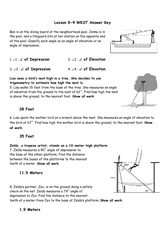

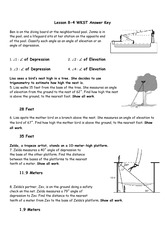

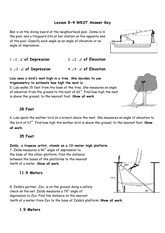
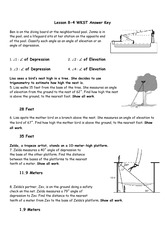
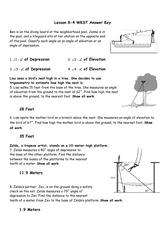



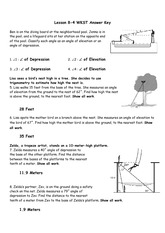
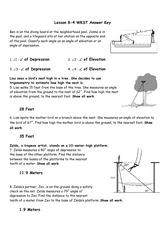
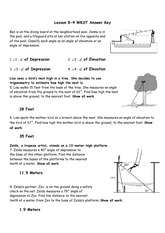


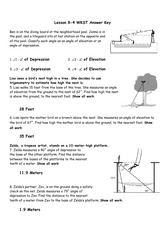
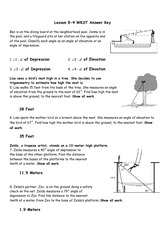
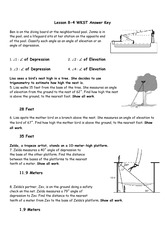
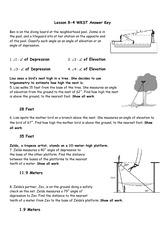














Comments